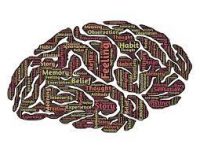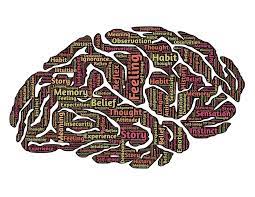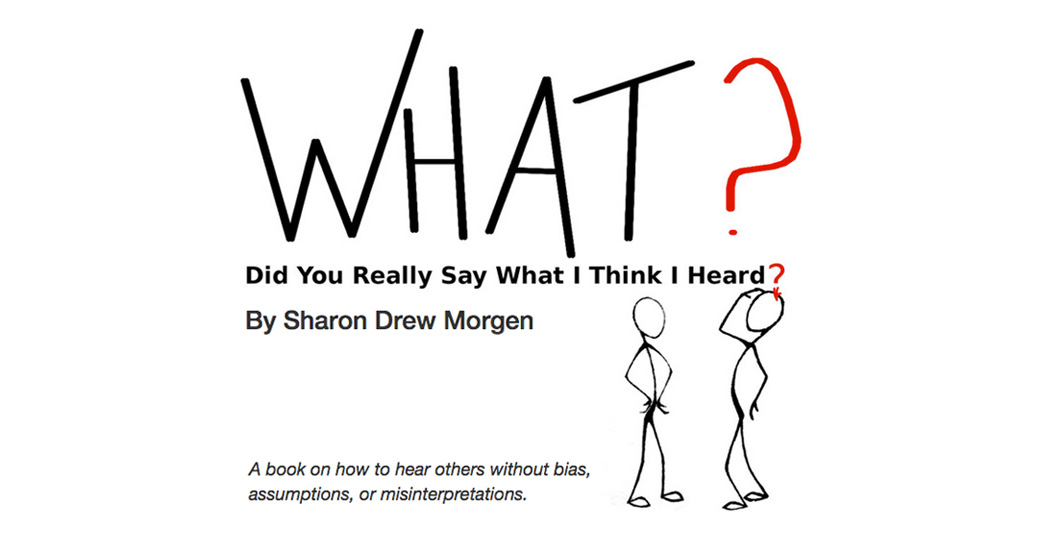Our Brains Determine Our Reality

 Do you know where your ideas, behaviors, and choices come from? Every thought we have comes from existing neural circuitry, as does everything we do or hear or are curious about. What we hear others say is a potentially inaccurate translation from our existing neural circuitry; everything we ‘know’, every opinion we believe comes from – you guessed it – our history.
Do you know where your ideas, behaviors, and choices come from? Every thought we have comes from existing neural circuitry, as does everything we do or hear or are curious about. What we hear others say is a potentially inaccurate translation from our existing neural circuitry; everything we ‘know’, every opinion we believe comes from – you guessed it – our history.
In other words, we live in subjective worlds biased by how our brain stores, translates, and generates our history electrochemically. While this is a known fact in neuroscience, we forget how it restricts our lives. The way we naturally hear, see, feel, act, think limits new thinking, new ideas, curiosity.
But it’s possible to develop wholly new circuitry to add new choices and behaviors consciously to get beyond the restrictions. In fact, I’ve developed models that do so. They traverse the mind -> brain connection to trigger conscious choice and generate permanent behavior change.
HOW BRAINS EXPERIENCE EVERYTHING
In this essay, I’ve pulled out sections from HOW? that point out the elements involved in how brains bias our reality. Due to the complexity of the material and the limits of an essay, I offer no skills here to make changes. If you’re interested in learning how to address these, please read HOW?
We construct our reality: What we notice, think, feel, experience, hear, do are outputs – automatic responses to electrochemical signals that our brains interpret to represent our beliefs, norms, mental models, and history. We live in subjective and biased worlds.
Unfortunately, we are at the mercy of how our brain interprets incoming data. Our conscious self is out of control. What we experience is based on what our brain perceives from our historic circuits, not from what is actually going on. As an example: what we see contains no color per se, only light vibrations that get translated into color by the rods and cones in our eyes; what we hear is constructed by our brain seeking a match with our history and biases.
Every minute of every day we construct our ‘reality’, limited by the circuitry, the knowledge, beliefs, experiences, etc. Our brains are automatic mechanisms that merely do what they’re electrochemically told.
The meaning derived from any situation, what causes us to ‘know’ something or accept something as ‘real’, or ‘hear’ something ‘accurately’ comes from our existing, historic circuits. In other words, what we know and think and hear, what we consider reality, is subjective and biased.
Our brains cause us to be stuck in old patterns and behaviors, limiting what we hear to what we’ve heard before, what we do to what we’ve done before. It’s habituated, automated, and normalized, causing us to keep doing what we’ve always done regardless of ‘reality’, discipline, or goals.
LISTENING
Listening is a physiological, neurological, electrochemical, and mechanical process, devoid of meaning. Words are merely ‘puffs of air’ until they’re translated by existing (subjective, biased) circuits.
As incoming puffs of air, words (as sound vibrations) enter our ears and get turned into electrochemical signals which then get dispatched (with distortions and deletions) to ‘similar-enough’ circuits before being turned into meaning via our existing neural circuitry. (My book What? explains this thoroughly.) What we think we hear is merely some fraction of what was intended and rarely fully accurate – what our existing circuits translate for us, not necessarily what a Speaker intends. We can’t understand what our brains don’t have circuits to translate. This is a problem when hearing and learning new material.
Since it’s quite difficult to accurately hear what’s said, our communication partners, trainers, coaches assume what they hear and say is heard as intended. It is not. We all ‘hear’ each other when our brain circuits send sound vibrations from spoken words to ‘similar enough’ circuits that often don’t have the appropriate circuitry to translate incoming, intended messages accurately.
CHANGE
Change is a process of creating wholly new neural circuits by: inputting precise (new) beliefs and mental models; gathering information from all elements that caused the status quo; understanding, and getting buy-in, for the risk of change.
Resistance occurs when people are asked to do something outside their beliefs or historic circuits and their brains identify the incoming as risky. It can be avoided if we include a full representation of people in data gathering, goal setting, risk management, and the solution design.
Information doesn’t teach anyone how to make a decision since incoming information will always be translated by the listener’s brain subjectively.
Our curiosity is limited to what’s already been programmed in our brain. Otherwise we’ve got no way to notice something or think it.
No outsider can ever understand someone else’s brain configurations. Leaders, coaches, therapists, sellers, pose biased questions and interpret what’s been said subjectively.
Our opinions have everything to do with our beliefs and nothing to do with reality. Even with strong evidence to the contrary, we will believe nothing that goes against them unless we were seeking divergent ideas.
QUESTIONS
Conventional questions are formulated by the words, intent, and goals of the Asker and pull biased, often partial, data from a Responder. The data gathered has some unknown degree of accuracy. I invented brain-change directed Facilitative Questions to solve the problem.
Standard questions
- ignore the listener’s underlying personal systems (beliefs, mental models, historic circuitry, etc.) and have a good chance of missing important data stored beyond the parameters of the question.
- are problematic when used to gather information as they restrict the scope of the search and bias the outcome.
- lead to conscious, automatic, habituated responses from well-worn superhighways that may not offer accurate responses.
- have a high probability of overlooking the full set of unconscious criteria that created and maintain the problem to be solved.
- get translated by Responders according to their existing circuitry which may delete, misconstrue, or resist incoming requests as they’re translated uniquely, outside the scope of the Asker’s question.
BEHAVIOR CHANGE
Behaviors are expressions of a system (i.e. the underlying beliefs, norms, etc.). As such, the main component in behavior change is new neural circuitry. You can’t change a behavior by trying to change a behavior.
Because brains operate automatically and are electrochemically organized to choose – in five one-hundredths of a second – the nearest and most-used ‘similar-enough’ pathway to execute an incoming request (regardless of the level of compatibility), behaviors arise from existing circuits. Brand new behaviors don’t occur merely because we want them to or practice them.
When learning something new, several activities are required for our brain to create new circuitry to generate it. They include beliefs (check for congruence); stop/fail trials; knowledge acquisition (reading, videos, etc.); and buy-in. Watch my video on a new learning model I invented that generates new neural circuits for new learning.
A behavior is a belief in action, an outward manifestation – a representation, a translation, an expression, an output – of our systemic world views.
Regardless of how extensive or important the need to change, NO CHANGE will occur if the system believes it will face major disruption. And NO CHANGE will occur unless the system recognizes an incongruence.
If the cost of change is greater than staying the same, the system will resist.
Change is more complex than merely adding new data: because brains generate action from existing knowledge and circuitry, new content doesn’t cause new action unless there are circuits in place to accept and translate it.In other words, people cannot understand ideas that fall outside their habitual circuits, and their brain will translate the ‘new’ incorrectly, causing misunderstanding.
Because we each have unique brain configurations and ways of translating incoming content, an outsider (coach, parent, seller, doctor, etc.) can never understand the full extent what’s going on in the unconscious of another. Yet to facilitate change, the Other must get into their unconscious circuits where their answers are stored.
Making a new decision, creating new habits, or even getting rid of long-held biases has little to do with the rationality, need, or behaviors we seek to change.
When we try to change a behavior by trying to change a behavior, (i.e. Behavior Modification), we’re hindered by
- our natural biases and subjectivity,
- the absence of neural circuitry to translate what we want into action,
- how our brain instigates behaviors, actions, choices, or thoughts automatically, mechanically, physiologically, neuro-chemically and electrochemically (i.e. outside of conscious awareness).
Permanent change begins by developing wholly new circuits that contain new beliefs and new behaviors emerge automatically. See my course on the HOW of Change.
All change is systemic and must include
- buy-in from the system
- acceptance of risk
- notice of an incongruence
- norms that match the values of the system (systems congruence).
Systems don’t like incongruence; it’s only when a system fully recognizes it cannot solve a problem by doing what it’s always done and recognizes an incongruence, that there’s a willingness to change. But it will only consider change so long as the change won’t compromise the system.
If we try to change in a way that goes outside our beliefs or mental models, our brain will resist as there are no circuits set up to generate the change.
Brains and systems are happy to change, to create new cell assemblies, so long as the proposed change is congruent with the rules of the system. When you try to get different results using the same structure that caused the problem to begin with, you’re actually causing the problem to continue as the underlying system will reject/resist anything new.
For those wishing to learn new skills to modify our unconscious brain outputs, please read HOW? or contact me: Sharondrew@sharondrewmorgen.com
____________________________
Sharon-Drew Morgen is a breakthrough innovator and original thinker, having developed new paradigms in sales (inventor Buying Facilitation®, listening/communication (What? Did you really say what I think I heard?), change management (The How of Change™), coaching, and leadership. She is the author of several books, including her new book HOW? Generating new neural circuits for learning, behavior change and decision making, the NYTimes Business Bestseller Selling with Integrity and Dirty Little Secrets: why buyers can’t buy and sellers can’t sell). Sharon-Drew coaches and consults with companies seeking out of the box remedies for congruent, servant-leader-based change in leadership, healthcare, and sales. Her award-winning blog carries original articles with new thinking, weekly. www.sharon-drew.com She can be reached at sharondrew@sharondrewmorgen.com.
Sharon Drew Morgen May 26th, 2025
Posted In: Change Management



